On the eve of the conclave, final preparations are taking place at a feverish pace. Monday afternoon the necessary staff and personnel will be sworn in, as is required by apostolic constitution. Tuesday the 115 electoral cardinals will begin the day early, entering the Santa Marta residence and attending papal pro eligendo mass. The first smoke will “in all probability” be black, according to the spokesman for the Holy See, Fr. Federico Lombardi. In any case, it will be a test of people’s eyesight: starting Tuesday, weather in Rome is expected to take a turn for the worse, with rain forecast all week long.
Cameras for the Vatican television center will be focused on the little chimney of the Sistine Chapel, broadcasting live morning and afternoon, “just so no one will be caught off guard,” Lombardi joked. The inaugural mass for the new pope will not have to be held on a Sunday, but can take place during a weekday instead.
Some statistics and numbers provide past comparison: “In 2005,” Lombardi said, “black smoke was seen first thing in the morning at 11:52, while white smoke wasn’t seen until 5:50 p.m.” Here’s a look at how long various conclaves have lasted:
1903 – Pope Pius X (3 days, 7 elections)1914 – Pope Benedict XV (4 days, 10 elections)1922 – Pope Pius XI (5 days, 14 elections)1939 – Pope Pius XII (2 days, 3 elections)1958 – Pope John XXIII (4 days, 11 elections)1963 – Pope Paul VI (3 days, 6 elections)1978 – Pope John Paul I (2 days, 4 elections)1978 – Pope John Paul II (3 days, 8 elections)2005 – Pope Benedict XVI (2 days, 4 elections)
Swearing In The Staff
A staff of 90 people is brought in to help the Camerlengo Tarcisio Bertone organize and manage the conclave, all of whom will be sworn in before Bertone in the Paolina Chapel Monday afternoon. The first will be the secretary of the College of Cardinals, Archbishop Lorenzo Baldissieri, followed by the master of ceremonies, Monsignor Guido Marini. Then come ceremony participants, priests of the papal sacristy, priests who will remain available for confessions and doctors and nurses. Last are the members of technical services, like the bus drivers who will shuttle back and forth between Santa Marta and the Sistine Chapel, security officers and military from the Swiss Guard.
Tuesday’s Program
Early Tuesday morning 115 electoral cardinals will enter the Domus Sanctae Martae in order to set their personal baggage and belongings in their respective rooms. At 10 a.m. St Peter’s will celebrate the pro eligendo romano pontefice mass, overseen by Dean of the College of Cardinals, Cardinal Angelo Sodano. Then they will have lunch, take a break and climb aboard the buses that will take them from Santa Marta to the apostolic palazzo, scheduled for 3:45 p.m. At 4:30 p.m. there will be a solemn procession from Paolina Chapel to the entrance into the Sistine Chapel. Fifteen minutes later the “extra omnes” will take place, during which the Sistine Chapel is locked by key. After this the cardinals will be sworn in, then they will meditate and hold the first elections. At 7:30 p.m., when it will be nighttime in Rome, vespers will be held in the Sistine Chapel and the cardinals will return to Santa Marta. Dinner will be served at 8 p.m., then prayers and everyone will go to bed.
What’s Different With Respect to 2005
Compared to the conclave that elected Benedict XVI, the situation today appears significantly different, as the Archbishop of Lyon, Cardinal Philippe Barbarin, stated in no uncertain terms.
“Last time there was a single, powerful figure; three or four times superior to all the other cardinals," Barbarin said. "That person was a unique theologian, and his name was Joseph Ratzinger. This time things are different. Therefore the choice must be made between one, two, three, four … 12 different candidates.”
It appears that the conditions under which this conclave is beginning are far more complex than those that existed in 2005, when already during the second day of elections (after no more than four total elections were held) Joseph Ratzinger’s name came out. On the eve of the conclave, sources claimed that Ratzinger could already count on at least 50 votes in his favor (rumors then confirmed by Limes, the Italian magazine). Even the Cardinal of Paris, André Vingt-Trois, has spoken of “roughly half a dozen candidates” still in the running in 2013.
Conservatives, Reformers And Outsiders
During the first elections, Archbishop of Milan Angelo Scola, 71, should receive a consistent number of votes: 35 to 40 in favor, according to reports across the Italian press. The archbishop should be the choice for a number of different European cardinals, as well as a few U.S. cardinals. One of his most influential supporters is apparently Christoph Schönborn, the Archbishop of Vienna. The Archbishop of San Paolo Odilo Pedro Scherer, a Brazilian with a great deal of experience in the curia, is rumored to be in second place with approximately 25 votes. He is the candidate backed by the so-called “Roman party,” led by the pair of ex-enemies, Angelo Sodano (Dean of the College of Cardinals) and Tarcisio Bertone (Camerlengo).
The third candidate may well be Canadian Marc Ouellet, prefect of the Congregation of Bishops, who is expected to attract votes from South America and the U.S. Mexican Cardinal Francisco Robles Ortega is another name not to be underestimated.
Slightly behind these men, though still among the feasible candidates, are Capuchin Sean O’Malley and the Archbishop of New York Timothy Dolan, who is 63 years old. Names included among the list of “outsiders” are Philippine Luis Antonio Tagle and Argentine Jorge Mario Bergoglio, as well as the Archbishop of Colombo, Malcolm Ranjith Patabendige Don. Two other names still under consideration are Hungarian Péter Erdő and Austrian Christoph Schönborn.
According to Italian newspaper La Repubblica, the Archbishop of New York Timothy Dolan has attracted votes not only from his compatriots, but also from several of the resident Italian bishops hostile to the Roman curia: Angelo Bagnasco (Genoa); Giuseppe Betori (Florence); Carlo Caffarra (Bologna) and Crescenzio Sepe (Naples).
The New York Times: Unpredictable Factions
The New York Times has described the situation before the conclave as a battle between two factions: on one side, cardinals who work in the Vatican (the so-called curia cardinals); on the other the “Reformists,” who want a new pope capable of contrasting the “Vatican’s corruption, inefficiency and reluctance to share power and information with bishops from around the world.”
According to the Times, the factions participating in this conclave are much more unpredictable than those in the last conclave, in part because they are not aligned geographically. For example, the fact that the head of the curia (from Bertone to Sodano) support the Brazilian Scherer is considered “counterintuitive,” as is the support that at least several members of the “Reformists” seem ready to lend Italian candidate Scola. Cardinal Scherer is of German origins, but his Brazilian passport would give the Catholic Church its first pope from South America, which currently boasts roughly 40 percent of the world’s Catholics.
But the games have only just begun and remain completely open -- the Times defines the process as a “fluid contest with ever-shifting alliances and priorities.” In the event that Scola and Scherer come to a standstill, there is a chance that a “compromise candidate” emerges, and the newspaper goes on to play guessing games with the eventual nationality of such a candidate, who may come from Canada, Hungary, Argentina, Mexico, the Philippines or “even the United States.”
